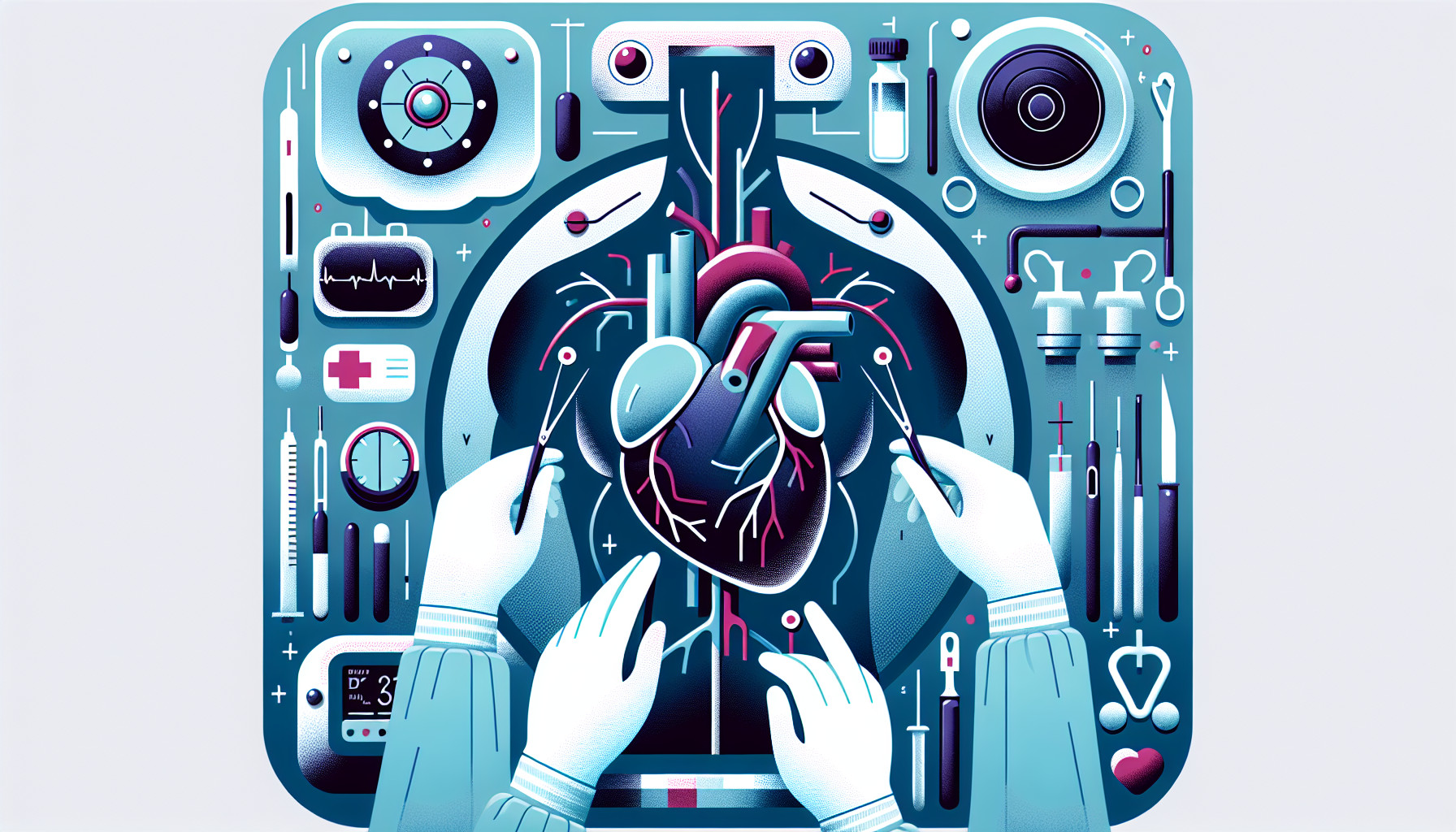Our Summary
This research paper reviews data from the Japan Cardiovascular Surgery Database concerning a specific type of heart surgery called coronary artery bypass grafting (CABG). The study looks at surgeries performed in 2015 and 2016. It particularly focuses on pre-surgery conditions, outcomes after surgery, and the type of graft material used for a specific artery.
This study found that over half of the surgeries were performed ‘off-pump,’ meaning the heart was still beating during the surgery. The graft (which is a piece of blood vessel taken from another part of the body to replace the blocked artery) was most commonly taken from the internal thoracic artery, in around 72% of cases.
The results showed that the death rate during surgery was 1.7% for those who were not emergency cases, 8.8% for emergency cases, and 3% in total. These rates were similar to previous studies. Notably, the death rate was lower in non-emergency surgeries performed ‘off-pump’ (1.1%) than ‘on-pump’ (2.5%) surgeries. Additionally, patients who had ‘off-pump’ surgeries had better outcomes in terms of health issues after surgery, with the exception of readmission within 30 days.
FAQs
- What percentage of coronary artery bypass grafting (CABG) were performed off-pump in 2015 and 2016 according to the data from the Japan Cardiovascular Surgery Database?
- What were the operative mortality rates for elective and emergency cases of CABG, and how do they compare to previous reports?
- What graft material was most commonly used for the left anterior descending artery (LAD) in CABG cases?
Doctor’s Tip
One helpful tip a doctor might tell a patient about coronary artery bypass is to consider the option of off-pump coronary artery bypass grafting (OPCAB) as it may have lower operative mortality and better outcomes compared to on-pump CABG, especially in elective cases. It is also important to discuss and choose the appropriate graft material for the left anterior descending artery (LAD), such as the internal thoracic artery, for better long-term results.
Suitable For
Patients who are typically recommended for coronary artery bypass include those with severe coronary artery disease, significant blockages in multiple coronary arteries, angina that is not controlled with medication, left main coronary artery disease, prior failed percutaneous coronary intervention (PCI), and high-risk patients who are not suitable candidates for PCI. Additionally, patients with diabetes, heart failure, or other comorbidities may also be recommended for coronary artery bypass surgery.
Timeline
Before coronary artery bypass grafting (CABG):
- Patient undergoes diagnostic tests such as coronary angiography to determine the extent and location of blockages in the coronary arteries.
- Patient may undergo lifestyle changes, medication therapy, and/or other interventions to manage symptoms and improve heart health.
- Patient may experience symptoms such as chest pain (angina), shortness of breath, fatigue, and/or heart palpitations.
After coronary artery bypass grafting (CABG):
- Patient is monitored closely in the intensive care unit (ICU) immediately after surgery.
- Patient is gradually weaned off of mechanical ventilation and other supportive measures.
- Patient may experience pain, fatigue, and other side effects of surgery during the recovery period.
- Patient undergoes cardiac rehabilitation to improve cardiovascular fitness and overall health.
- Patient may need to make lifestyle changes, take medications, and attend follow-up appointments to prevent future cardiac events.
What to Ask Your Doctor
- What are the benefits and risks of off-pump versus on-pump coronary artery bypass grafting?
- What is the expected outcome of the surgery, including operative mortality and postoperative complications?
- What is the best choice of graft material for the left anterior descending artery in my specific case?
- How long is the recovery process after coronary artery bypass surgery, and what can I expect in terms of postoperative care and rehabilitation?
- Are there any lifestyle changes or medications that I will need to take after the surgery to maintain the health of my heart?
Reference
Authors: Saito A, Hirahara N, Motomura N, Miyata H, Takamoto S. Journal: Gen Thorac Cardiovasc Surg. 2019 Sep;67(9):736-741. doi: 10.1007/s11748-019-01162-y. Epub 2019 Jun 29. PMID: 31256329
